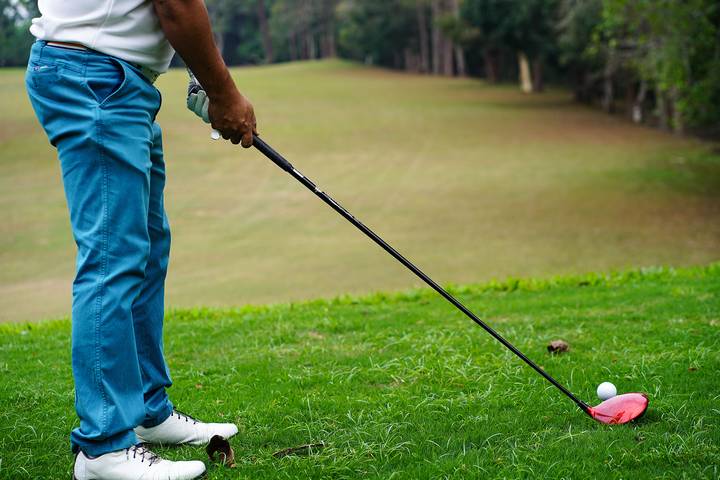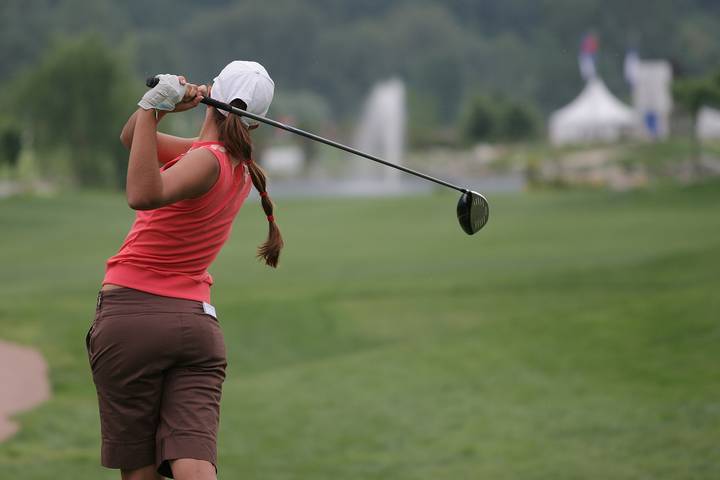Golf is a game of passion. Depending on your stroke count, it can be a great or terrible day, and the emotions stick with your long past the 19th hole. While so many factors affect your play in golf, you need to hit the ball toward the hole as directly as possible.
You can buy the best used golf clubs and have the fastest balls to set yourself up for success. However, that’s only part of the equation. If your swing is bad, you may as well pick the ball up and throw it toward the green. A golf swing has many moving parts that make up a cohesive whole, and this will lead to a successful game, regardless of anything else.
Do you have to hit the ball mastered? Here is the breakdown of how to swing a golf club.
Grip

Everything starts with the grip. How you hold your club will determine the effectiveness of your swing, and there are three grips to choose from.
Strong Grip
This is where a V shape is made with your thumbs, and your hands point to the right side of your head. A strong grip helps those that slice and have weak fades by closing the club face at impact.
Neutral
A neutral grip has the V shape pointing up towards your nose. This works if you hit the ball fairly straight. This keeps the club face square to the ball.
Weak
With a weak grip, your V points to the left side of your head. This will help to correct hooked shots with an open club face on contact.
Start by putting your left hand on the top of your club with your thumb tight against the club. Then place your right hand below it, interlocking your right pinky finger with your left index finger. If you are a left-handed player, your lead hand will be the right, and the trail hand will be your left.
Golf Posture

You need the correct posture to swing successfully, as it provides a solid foundation to address the ball. Align your body parallel to your target line with your feet shoulder length apart, and bump your lead hip slightly while your upper body tilts away a bit.
Your lead ear should be lined up with the ball. Bend your upper body from the hips while keeping your chin and chest up, and slightly bend your knees, keeping the weight on the balls of your feet.
Golf Swing

This is where all the motion and momentum happen. The swing can be broken down into:
Backswing
This is where you wind up and raise the club to the back of the address position. You rotate your torso as you transfer your weight from your front foot to the back foot.
Top of the Swing
You have reached the top, and your chest is facing away from the target as your left arm is straight to maintain your arc. Your body is completely coiled, ready for the downswing.
Downswing
Your downswing should be a smooth arc that builds speed and reaches full velocity at impact with the ball. Your shoulders move first, followed by your hips, as you shift your weight to your front foot.
Impact
As you connect with the ball, both arms should be straight. Make sure to keep your eye on the ball.
Follow Through
It’s important to keep your momentum through the entire swing, especially after impact, so you don’t decelerate too soon. You want full speed at impact and then allow your body to twist 90 degrees with your club ending behind you, with your trailing foot up on its toes. Your belt buckle should face the target, and your knees should be together.
Chicken Wing

This is an arm position that you want to avoid. As you enter the transition, where you pause before starting the downswing, some people raise the trailing elbow above the head. Then, the lead arm elbow is bent at impact while the wrist cups grip the club.
This can all be resolved by remembering to keep the elbows together as you reach the top our your backswing. You can run drills working on this as you perfect your swing altogether.
Other Considerations

There are many other mistakes made during the swing that affects your game, including:
Choking Grip
Hold your club firm but not so tight that you tense your muscles so hard you lose flexibility and speed.
Rotating Hips and Shoulders
Make sure you rotate your shoulders first, around halfway and then follow with your hips to maintain your balance through the swing for maximum power.
Forcing Transition
This is when you force your club downwards instead of having a natural tempo in the downswing to prevent slicing or hooking the shot.
As with most sports, the more you play, the more you can fine-tune your techniques. At its basic, this is how to swing a golf club. Work through these tips to improve your swing and get help from a pro or book a few lessons to ensure you have a constant swing, regardless of club or desired distance.




